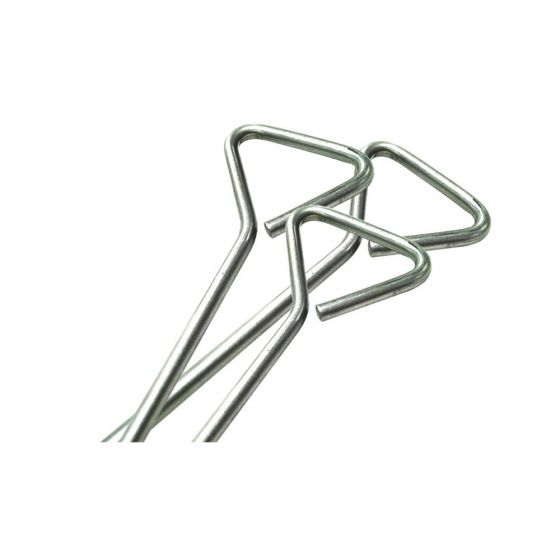- 225mm
- Pack of 250
- Cavity width: 76-100mm
- Masonry to masonry wall ties
- Type 2 and Type 4 options available
- Suitable for general purpose applications
Stainless Steel Wall Ties
- 225mm
- Pack of 250
- Cavity width: 76-100mm
- Masonry to masonry wall ties
- Type 2 and Type 4 options available
- Suitable for general purpose applications
Stainless Steel Masonry Wall Ties
Used in buildings with cavity walls, wall ties or 'brick ties' are used to join leaves of a cavity wall together and allow the two sections to act as a conjoined unit.
Type 2 Wall Ties
General purpose masonry wall ties (commonly described as Type 2 Wall Ties) are suitable for most applications such as in domestic and small commercial buildings upto 15 metres in height. They can also be used in buildings where heights exceed 15 metres, but should only be used in those scenarios if shown to be of adequate performance by calculation. Can be used in flat sites where the basic wind speed is upto 31 metres per second and the altitude isn't more than 150 metres above sea level.
Type 4 Wall Ties
Light-duty masonry wall ties (commonly described as Type 4 wall ties) are suitable for box-form dwellings upto 10 metres high, with leaves of similar thickness and includes internal separating cavity walls. Can be used in flat sites in towns & cities where the area's basic wind speed doesn't exceed 25 metres per second, and the altitude isn't more than 150 metres above sea level.
Positioning & Density
We recommend that for walls in which both leaves are 90mm or thicker, masonry ties need to be placed at not less than 2.5 per square metre (900mm horizontal x 450mm vertical centres). The ties should be evenly distributed throughout the wall area, with the exception of around openings, and should be staggered where possible.
Insulation Board
Where the insulation board is installed within the cavity and is restrained by ties with insulation retaining clips, it might be necessary to reduce the horizontal spacing of the ties to 600mm. At the vertical edges of an opening, unreturned or unbonded edges and vertical expansion joints, additional ties should be used at a rate of one per 300mm in height, and located not more than 225mm from the edge.
Length of Tie/Embedment
Wall ties should be of the correct length to ensure that they are fully embedded in the masonry. The tie should have a minimum embedment of 50mm in each leaf but should also allow for site tolerances in relation to the cavities' width and centering of the tie.
The recommended tie lengths will therefore achieve an embedment of between 62.5mm and 75mm.
Sound Resistance
As stated inside the government's Approved Document E in 2003 for Building Regulations, wall ties used in external and separating cavity walls must have a minimum value of dynamic stiffness to reduce the transmission of airborne noise. Ties are separated into Type A and Type B.
- Type A: Can be used in separating walls and external walls subject to them also having the required structural capacity. They can be butterfly ties or other ties with a dynamic stiffness of less than 4.8 MN/m3.
- Type B: Can only be used in external cavity walls subject to them also having the required structural capacity. They can be butterfly ties or other ties with a dynamic stiffness of less than 113 MN/m3.


